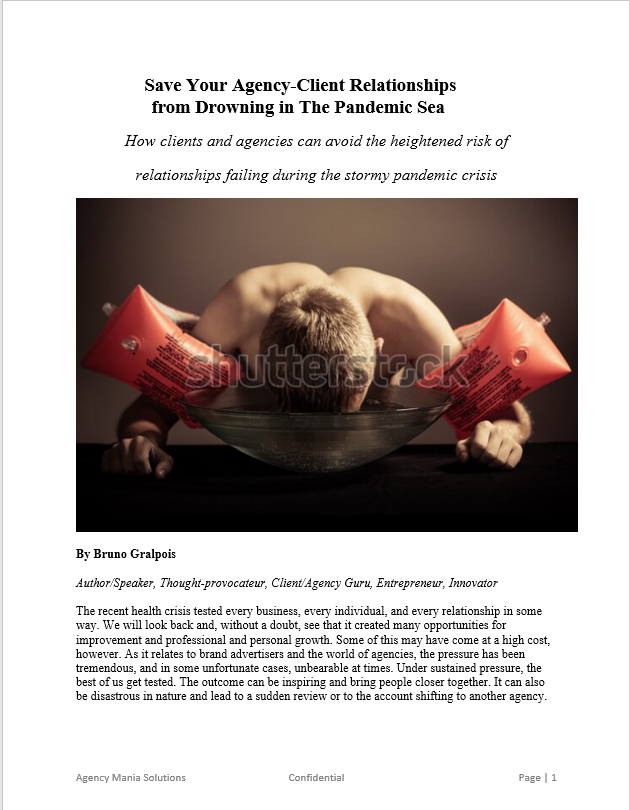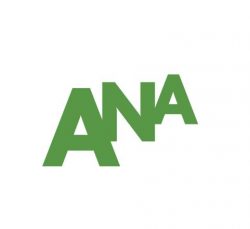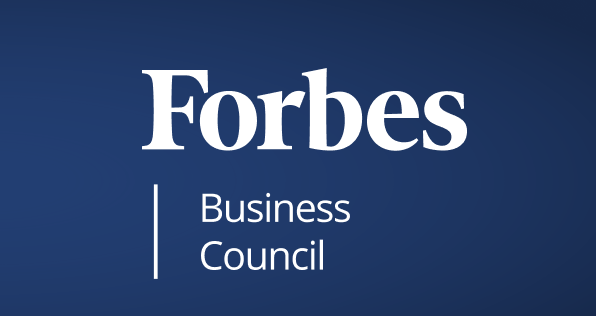Featured on 4A’s and ANA:
How clients and agencies can avoid the heightened risk of relationships failing during the stormy pandemic crisis:
— Read the published article on 4A’s —
— Read the published article on ANA —
The recent health crisis tested every business, every individual, and every relationship in some way. We will look back and, without a doubt, see that it created many opportunities for improvement and professional and personal growth. Some of this may have come at a high cost, however. As it relates to brand advertisers and the world of agencies, the pressure has been tremendous, and in some unfortunate cases, unbearable at times. Under sustained pressure, the best of us get tested. The outcome can be inspiring and bring people closer together. It can also be disastrous in nature and lead to a sudden review or to the account shifting to another agency.
Yet, despite the pandemic crisis, there are ways to minimize risks and set a strong foundation for agency-client relationships, even tense ones, to survive and even thrive:
From pitching to strengthening
As pressure mounts and budgets get tight, most advertisers show little patience for missed steps or shortcomings with agency partners. This can be the case even if they share equal responsibility in the end, because of poor client guidance, lack of clarity, or effective decision making. A common shortcut is finger-pointing instead of self-introspection and open dialog. This can lead a client to initiate a review of the account, whether that review is intended to simply apply more pressure to the incumbent agency to course-correct the situation, or to genuinely source a better-suited partner. Yet, as is often the case, once the review is finalized and a new agency has been selected, the same issues are likely to eventually reemerge with that new partner. Instead of kicking off a formal review, clients are better off institutionalizing a lean but reliable feedback process to gather input, identify any performance issues, and come up with joint action plans to address them swiftly. The recent survey, “The Business Case for Relationship Management,” conducted jointly by the ANA and the 4A’s revealed that both parties benefit greatly from “gathering feedback on a relatively consistent basis, with clients indicating more use of 360-degree evaluations, mid-year reviews, and annual reviews.”
To strengthen these relationships, advertisers must move toward fewer reviews and more deliberate and constructive feedback. To fortify the partnership, make your annual or semi-annual performance review a formal, actionable 360-degree exercise.
From squeezing to prioritizing
Producing more, better, and faster content is a top priority for marketing leaders anxious to feed a terribly hungry and impatient marketing machine. To do so, they must also produce content cheaper to stretch existing budgets or make up for declining ones in creative ways. Advertisers are continuously shifting dollars from agency fees into media and production line items, stressing the system they rely on to produce the work. The result is often new, unforeseen challenges such as quality, timing, or capacity issues. This is what motivated brands like Mondelez International to select Publicis Production and S4 Capital’s MediaMonks to handle their global content production, leveraging a tech infrastructure that operationalizes content management and, as with any investment, is intended to help the company run more efficiently. The answer to budget tightening is not in random cost-cutting, but in reapplying human and capital resources strategically.
To support these relationships, advertisers must move away from arbitrary budget squeezing and toward a more investment-based approach to prioritize the work and resource allocations. Use your budget and SOW development process to make deliberate resource decisions and manage them carefully throughout the year.
From falling down to rising up
Agility and flexibility have never been more important partnership qualities than they are in a COVID world. In a constantly changing and unpredictable business environment, the ability to move quickly, reset, and redeploy has become essential for brands. Experimentation, conducting pilots, and rapid optimization are still relevant marketing activities, but only if they provide truly actionable insight and learnings at scale. Advertisers are looking for agency partners that embrace data and measurement, not as a side activity or an afterthought, but as a foundational part of their creative and production process. The ANA CMO Growth Council recently identified seven major priorities for marketing leaders, two of which speak to the need for more effective applied learning in marketing: they call for CMOs to invest in data and technology and embrace cross-platform measurement.
To advance these relationships, advertisers must move toward failing less and learning more. To achieve that, they must turn cross-platform and end-to-end campaign measurement into a simplified information hub – accessible by all contributors – to improve campaign performance and drive actionable learnings.
From pushing to pulling
In challenging times, tensions rise across the entire supplier ecosystem and a natural tendency for overly prescriptive guidance prevails over collaborative thinking and open dialog. The health crisis added another layer of complexity. Agencies and clients must find new ways to work together, relying on communication and collaboration tools. As new agency models and capabilities emerge, and as advertisers rely on both in-house teams and external agency partners, they must improve communication flows, collaboration, workflows, and approval processes for all involved. eMarketer reported a 15% increase in companies using communication and collaboration tools since last year. This reengineering of the marketing process takes into consideration an increasingly more distributed workforce and a need for tighter alignment behind goals, KPIs and resources available.
To encourage these relationships, advertisers must move away from partnership pressure and toward more effective technology-based collaboration and information-sharing. A seamless marketing engine is one that is ownership-agnostic and focused on outcomes, but with clear designated roles. Brands must now pull agency partners into their internal processes where appropriate, so the use of these resources is more effective and more streamlined.
The agency-client relationship has never been under greater pressure than in recent months. As the storm continues to rage, agencies and clients alike try to stay afloat and not sink relationships that took months or even years to build. Strong leaders always flourish in times of crisis. So do well-grounded partnerships.
By Bruno Gralpois, Author/Speaker, Thought-provocateur, Client/Agency Guru, Entrepreneur, Innovator
December 17, 2020








